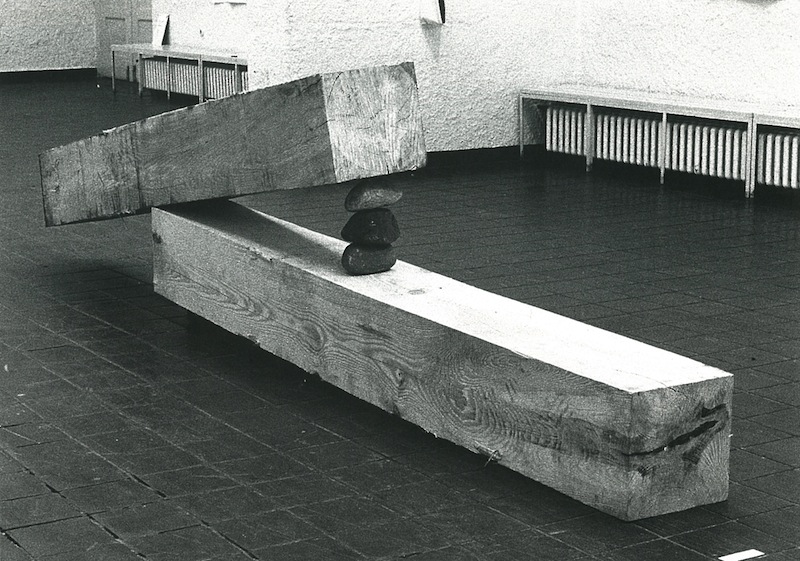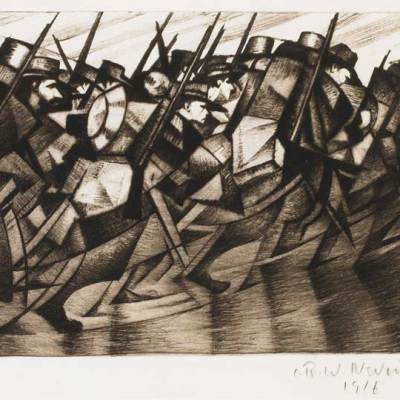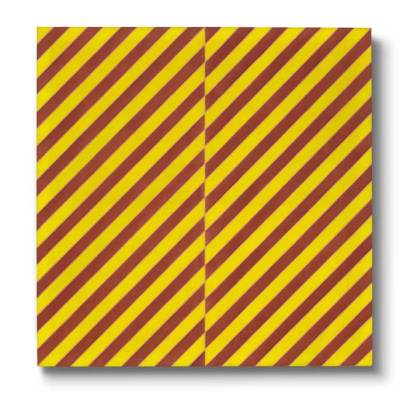Adriano Pedrosa (b. 1965) is among the most sought-after curators on the international circuit. In 1998 and 2006, he was part of the curatorial team of the São Paulo Biennial, and in 2011 joined forces with Jens Hoffmann for the 12th Istanbul Biennial, a tightly curated affair inspired by the work of Félix González-Torres. Since 2012, Pedrosa has curated the Spotlight section at London’s Frieze Masters (15–19 October), whose solo stands focus on 20th-century artists from across the globe.
How did the Spotlight section of Frieze Masters come about?
When Frieze Masters launched in 2012, I was invited to develop a section for the new fair. The idea was to dedicate it to solo stands. Usually when you have solo stands at art fairs, they present young artists – emerging artists – but at a fair that only shows work up to the year 2000, the solo section needed to have something else. From that, we developed the idea of a section dedicated to artists working in the 20th century.
Does that mean any 20th-century artists?
In the context of Frieze Masters, I wanted to work with a more provocative notion of ‘the master’ than usual, challenging what the more traditional collector would be looking for in terms of contemporary art – avoiding more established, blue-chip names, the usual white male figurative painters and typical mid 20th-century modernist artists.
From the first edition, Spotlight has favoured more conceptual and experimental, as well as feminist practices: these have always informed my work as a curator in general, partly because I’m from Brazil, where art history is quite dominated by female artists, and partly because I’m from the generation that grew up with artists such as the Guerrilla Girls, who revealed the striking sexism that exists in the reception of art, in museums, galleries and the press. This year we have two very well-known artists, Robert Morris [Castelli Gallery] and Hélio Oiticica [A Gentil Carioca], but other than that they’re artists who aren’t as well known as they should be.
And it’s a very international selection, isn’t it?
That’s right. Another focus of Spotlight has been artists working outside Europe and the US, bringing not only Latin American, but also Middle Eastern, Asian and African artists to the fair. And we’ve managed to strengthen this: after looking back at the first couple of years, I realised there weren’t a lot of Asian projects, so earlier this year I made a research trip and met with Keiji Uematsu, a fantastic artist I met in Osaka, presented by Yumiko Chiba Associates from Tokyo. I also met with Seung-taek Lee, a pioneer from Seoul who’s being presented by Gallery Hyundai. Many art fairs tend to cater to collectors’ tastes, but we’d like to show collectors and curators something else, something research-based, and not necessarily acclaimed by the market. Spotlight has the aspiration of being a pedagogical operation in that respect – it points in new directions, and it’s interesting to see that many artists have profited from that exposure and received more attention as a result.
That’s quite unusual for an art fair. How does the market context inform your selections?
I think the art fair is one platform that’s out there, and you can use it in an interesting way to give visibility to certain things that wouldn’t otherwise have it. We receive a lot of applications from galleries, who apply with a particular artist and body of work, but I also solicit a lot of projects in order to have the balance that I’d like to have – territorial balance, gender balance, as well as the political, experimental and conceptual practices that usually don’t come through naturally in the applications.
I have a lot of freedom in this respect – I suppose the limitations I have are that, with some galleries I’ve approached to participate in projects, the work is simply not available for sale, or there’s not enough demand for them to present a certain artist at a fair. We do know there are gaps between what the market is looking at and what institutions are looking at: many conceptual and political artists are well-known within the institutional circuit, but their market is not so strong, say, as Pop artists or mid-century figurative painters. Painting tends to be more collectable than the work of multimedia or conceptual artists.
Do curators have a major role to play at art fairs?
I think art fairs need a more curated approach. For art professionals and collectors, who’ve been to so many fairs, everything starts to look the same after a while. Curation allows disparate things to converse with each other in a meaningful way. One cannot forget the sales, because that’s what keeps a fair alive…or let’s say that I can forget about it, but the exhibitors probably can’t!
For me as a curator, much of the research for Spotlight has developed into other projects. I worked on a large-scale project in Rio de Janeiro earlier this year, ‘artevida’, looking at the relationship between art and life, mostly in the ’60s and ’70s: many artists who I had researched through Spotlight were included in that exhibition.
Is there now a greater appetite for Latin American artists in London than there might have been previously?
I’d say that London is perhaps the city that’s most open, not just to Latin American art, but to art from all over the world – look at the Tate programme, and their global Acquisitions Committees. We’ve seen the decolonisation of contemporary art in the last 20 years, but I think what’s happening now is the decolonisation of the 20th century.
We can no longer just have that old Eurocentric art-historical narrative through, let’s say, Abstract Expressionism, Pop, conceptualism, nouveau réalisme. We need to be more inclusive, more plural. You can see it happening at some institutions such as the Tate, with monographic exhibitions of artists like Mira Schendel, Saloua Raouda Choucair and Ibrahim El-Salahi, and at the Centre Pompidou with ‘Modernités Plurielles’ [until 26 January 2015]. It’s a very exciting time in art history right now, as the 20th century needs to be rewritten in a more open way.
Spotlight at Frieze Masters runs from 15–19 October 2014.
Click here to buy the October issue of Apollo



